 Seeds and Germination
Seeds and Germination
 Grow Setup
Grow Setup
 Seedling Stage
Seedling Stage
 Vegetative Growth
Vegetative Growth
 Pre-flowering
Pre-flowering
 Flowering
Flowering
 Ripening
Ripening
 Harvesting
Harvesting
 Drying
Drying
 Curing
Curing
 Troubleshooting
Troubleshooting
 Training Techniques
Training Techniques
How to Germinate Marijuana Seeds
 15 Minute Read
15 Minute Read
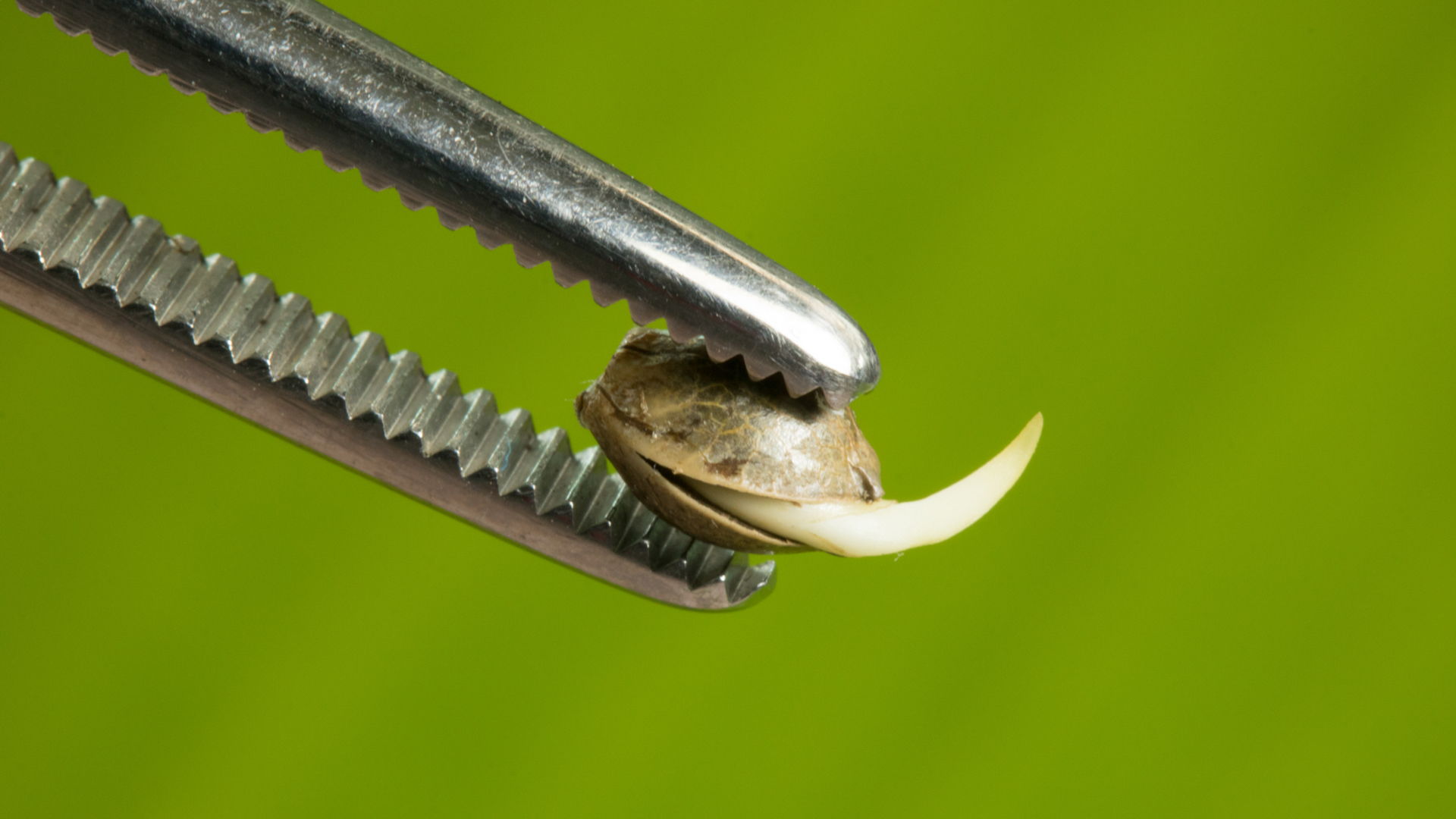
PUBLISHED: July 30, 2024
Are you ready to embark on your cannabis cultivation journey? Learning how to germinate marijuana seeds is the crucial first step in growing your own thriving cannabis plants. Whether you’re a curious beginner or an experienced grower looking to refine your technique, this comprehensive guide will walk you through everything you need to know about how to germinate weed seeds successfully.
From selecting the right seeds to mastering various germination methods, we’ll cover all the essential tips and tricks to give your cannabis seeds the best possible start in life. Let’s dive into the world of marijuana seed germination and set the foundation for a bountiful harvest!
Check your local laws before starting
Before embarking on the journey of germinating marijuana seeds, it’s crucial to understand and comply with your local laws. The legality of growing cannabis varies widely across different countries, states, and even municipalities. In some areas, it’s completely legal for medical or recreational use, while in others, it remains strictly prohibited.
Research your local regulations thoroughly to ensure you’re operating within legal boundaries. This may involve checking state laws, which can range from complete prohibition to allowing a certain number of plants for personal use. Be aware of federal laws as well, as they may conflict with state regulations in some countries.
Municipal ordinances should also be considered, as some cities or counties may have additional restrictions or requirements for cannabis cultivation. If you’re considering growing for medical purposes, check if your area has a medical marijuana program and what the requirements are for participation.
Some jurisdictions require growers to obtain licenses or permits, even for personal use. Understanding the potential legal consequences of illegal cultivation in your area is essential. Remember, ignorance of the law is not a valid defense, so take the time to educate yourself on the legal landscape in your area. Consider consulting with a local attorney specializing in cannabis law if you have any doubts or questions.
What is the easiest way to germinate weed seeds?
While no method is entirely foolproof, the paper towel method is widely considered one of the simplest and most effective ways to germinate marijuana seeds. This method is straightforward, requires minimal equipment, and allows for easy monitoring of the germination process.
The paper towel method offers several benefits. Its simplicity makes it accessible to beginners, as it’s easy to set up and maintain. It’s also a low-cost option, requiring only basic household items. The high success rate of this method is due to the ideal conditions it provides for germination. Additionally, it allows for easy monitoring, enabling you to check seed progress without disturbing the delicate process.
One of the key advantages of the paper towel method is its consistency. It provides a uniform environment for all seeds, which can be particularly beneficial when germinating multiple seeds at once. This uniformity helps in identifying any seeds that may be struggling to germinate, allowing you to focus your attention where it’s needed most.
Despite its simplicity, even this method requires attention to detail and proper execution. Factors such as seed quality, temperature, and moisture levels play crucial roles in the outcome. It’s important to use high-quality seeds, maintain proper temperature and moisture levels, handle seeds and seedlings gently, and be patient and consistent in your approach.
Select the Right Cannabis Seeds
Choosing high-quality seeds is fundamental to successful germination and subsequent plant growth. The physical characteristics of the seeds can give you important clues about their potential viability. Look for seeds that are dark brown or grey with a tiger-striped pattern. Avoid pale or green seeds as these are usually immature and unlikely to germinate.
Good cannabis seeds should be about 2-3mm in diameter, similar to a tomato seed. They should have a hard and smooth texture, with a slight waxy sheen. When gently squeezed, viable seeds should feel firm, not soft or hollow. The presence of any cracks or damage on the seed’s surface is a sign that the seed may not be viable.
When selecting seeds, there are several factors to consider beyond just their physical appearance. Strain selection is crucial and should be based on your growing conditions and desired effects. Research different strains to find one that suits your needs, considering factors like growing difficulty, expected yield, flowering time, THC/CBD content, and flavor and aroma profiles.
You’ll also need to decide between feminized and regular seeds. Feminized seeds produce only female plants, which are the ones that produce buds. Regular seeds, on the other hand, can produce both male and female plants. Your choice will depend on your growing goals and experience level.
Another consideration is whether to choose autoflowering or photoperiod strains. Autoflowering strains begin flowering automatically after a certain period, regardless of light cycle. Photoperiod strains, however, require specific light cycles to induce flowering. Each has its advantages and disadvantages, so consider your growing setup and preferences when making this decision.
Lastly, the reputation of the seed bank you purchase from is crucial. Look for seed banks with positive customer reviews, clear information about genetics and breeding, reliable shipping and customer service, and guarantees on seed viability. Purchasing from a reputable source increases your chances of starting with high-quality, genuine seeds.
How to Germinate Weed Seeds with the Paper Towel Germination Method
The paper towel method is a popular and effective technique for germinating marijuana seeds. This method provides an ideal environment for seeds to sprout and allows for easy monitoring of the germination process. Here’s a detailed guide on how to use this method effectively:
Step-by-Step Cannabis Seed Germination Instructions
Step 1: Prep the Paper Towels
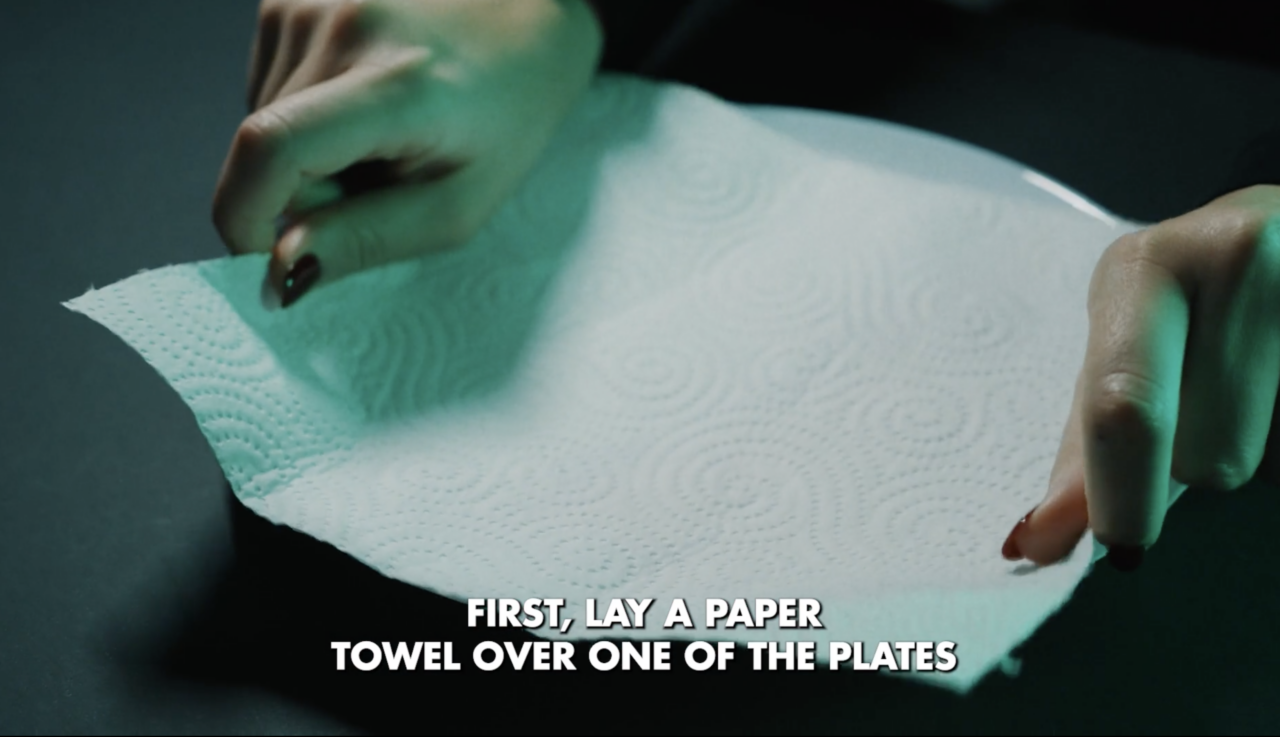
Start by placing a paper towel on one of the plates and wetting it with your water. Make sure the towel is damp but not dripping. Lift it up to check for any standing water on the plate.
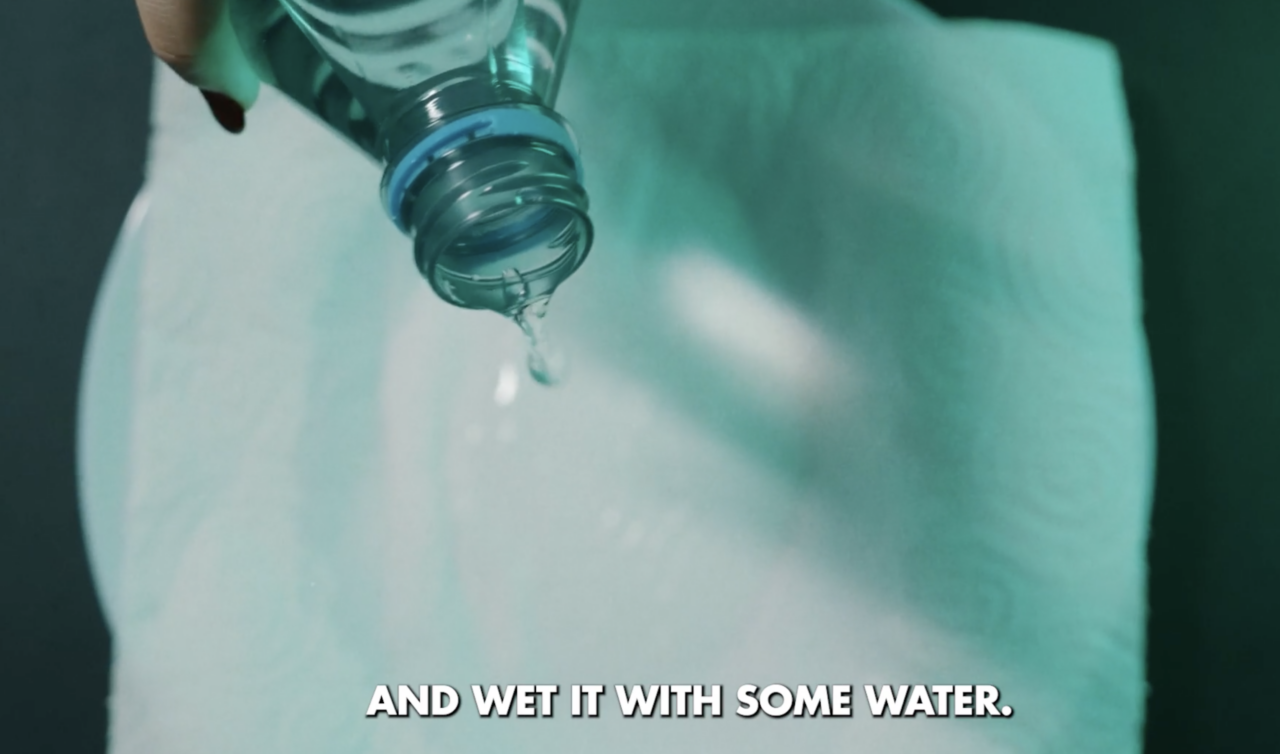
Step 2: Position the Seeds
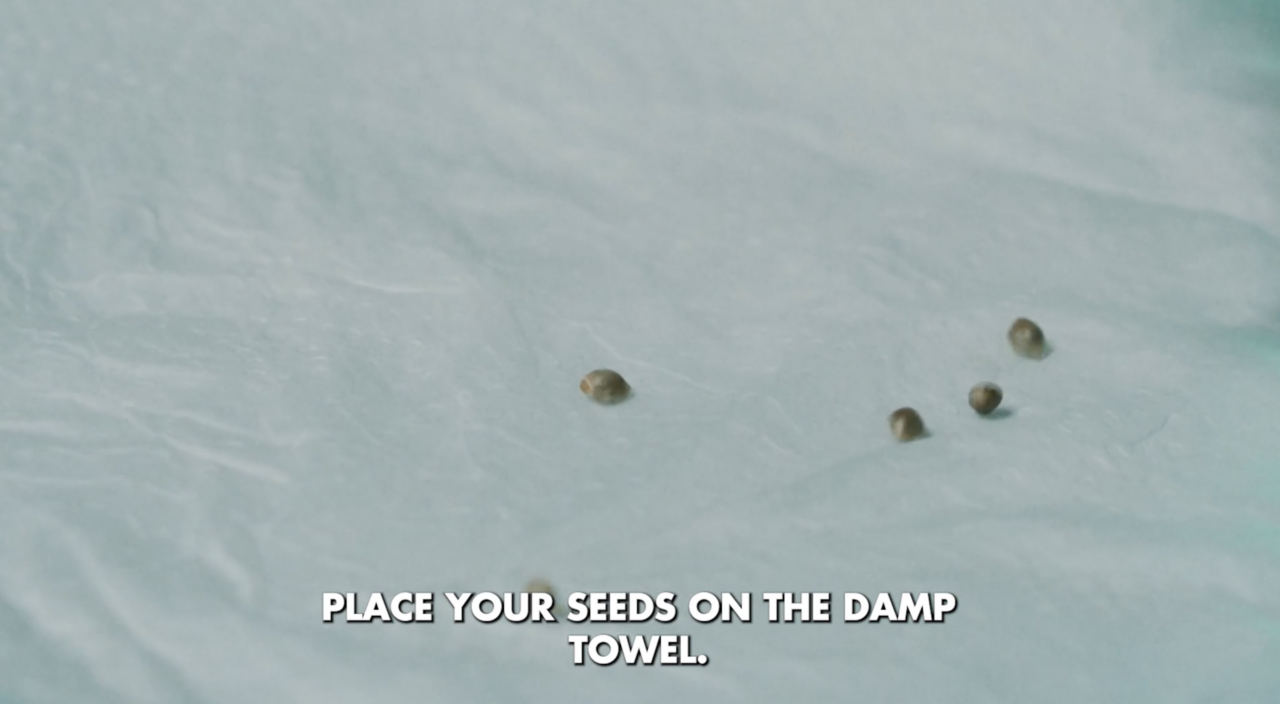
Place your seeds on the damp towel. Use tweezers to handle the seeds and space them about an inch apart. This spacing ensures roots have room to grow.
Step 3: Cover the Seeds
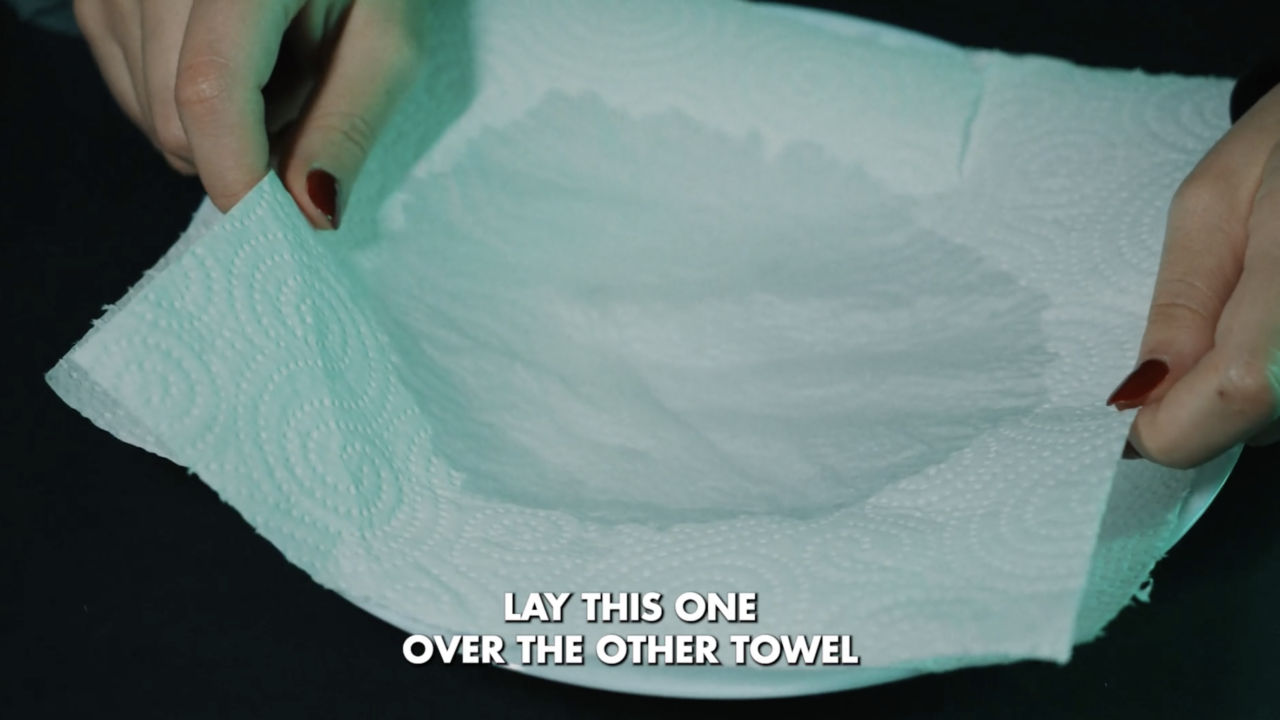
Dampen a second paper towel and lay it over the seeds, fully covering them. This helps maintain moisture while protecting them from direct light.
Step 4: Create the Environment
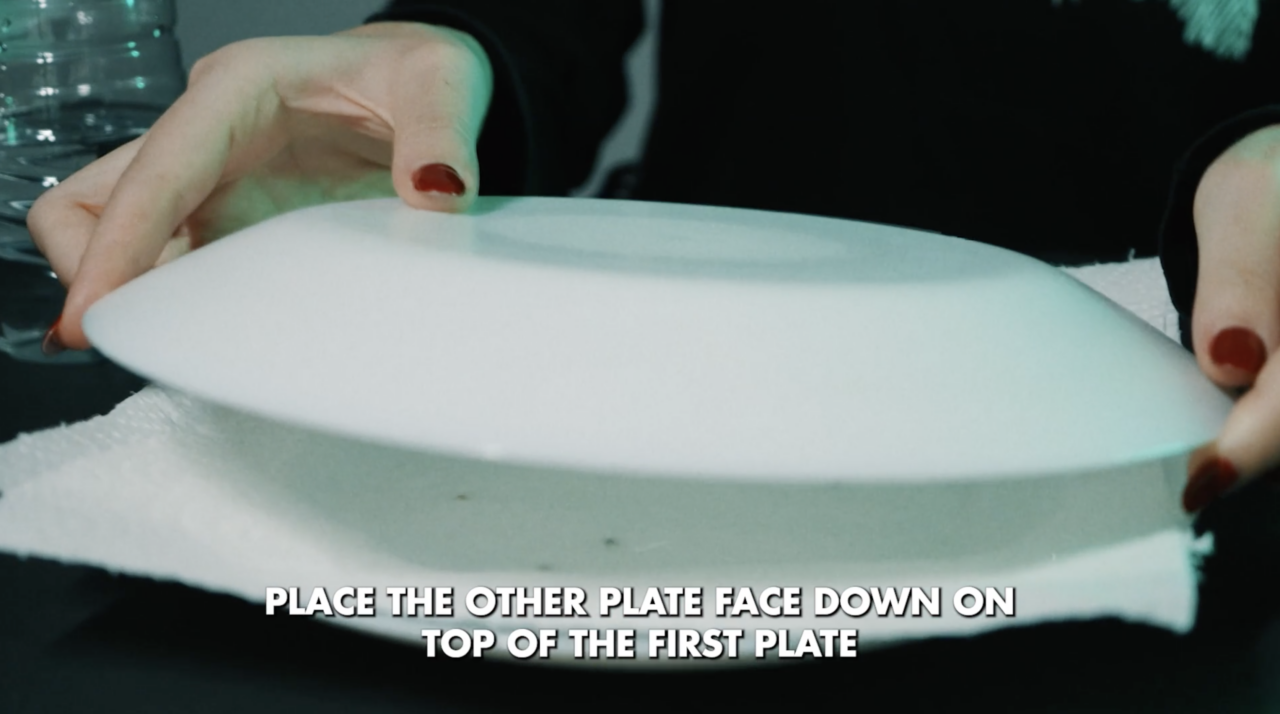
Take the second plate and place it face-down over the first to form a dome. This setup traps moisture and keeps the seeds in a dark, warm environment.
Step 5: Place and Wait
Put the plates in a warm, dark spot, like a cupboard or drawer. Check back after 24 hours to see if the seeds have sprouted taproots. If they haven’t yet, give them more time, up to 72 hours.
Step 6: Transfer Sprouted Seeds
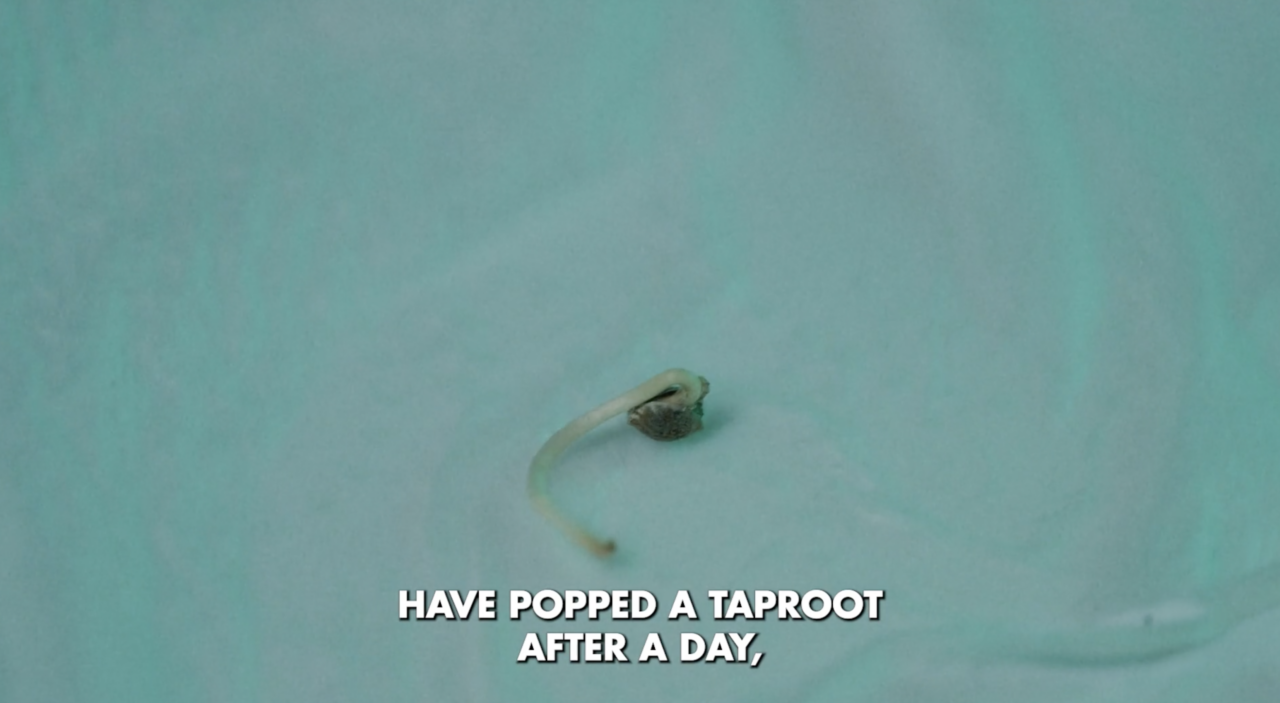
Once you see small white taproots, use tweezers to move the seeds into your soil or hydro pots. Plant them root-side down about 1/4 inch deep, cover lightly, and water gently.
Tips and Tricks for Germinating Seeds
Successful seed germination often comes down to attention to detail and creating the right environment. Here are some additional tips and tricks to improve your germination success:
- Use distilled or purified water for all stages of germination. Tap water can contain chlorine and other chemicals that may hinder germination.
- Handle seeds with clean hands or tweezers to prevent contamination. Seeds are delicate and susceptible to pathogens, so cleanliness is crucial.
- Be patient. Some seeds may take longer to germinate than others, even within the same strain. Don’t give up on seeds too quickly.
- Once planted, avoid overwatering. Excess moisture can lead to damping off, a fungal disease that kills seedlings.
- Provide 18-24 hours of light once seedlings emerge to prevent stretching. However, be cautious not to place them under intense light immediately, as this can stress young seedlings.
- Consider using a weak hydrogen peroxide solution to sterilize your germination area and tools. This can help prevent mold and bacterial growth.
- Some growers use rooting hormones to encourage faster root development, although this is generally not necessary for cannabis seeds.
- Keep a germination journal to track your success rates with different methods and strains. This can help you refine your technique over time.
What To Look Out For In Cannabis Seeds
When selecting cannabis seeds for germination, there are several key characteristics to consider:
- Color is an important indicator of seed maturity. Mature seeds are usually dark brown, gray, or black. Avoid pale or green seeds, as these are typically immature and unlikely to germinate successfully.
- Look for a slight tiger-striped or mottled pattern on the seed’s surface. This pattern is characteristic of many cannabis strains and can be an indicator of genetic quality.
- Size matters when it comes to cannabis seeds. They should be about the size of a tomato seed, roughly 2-3mm in diameter. Unusually small or large seeds may have genetic issues.
- The texture of the seed can tell you a lot about its quality. The surface should feel hard and smooth, not soft or wrinkled. A waxy coating on the seed is normal and helps protect it.
- Perform a simple float test by placing seeds in a glass of water. Viable seeds will typically sink within a couple of hours, while non-viable seeds tend to float.
- Fresh seeds typically have higher germination rates. If possible, check the production date of your seeds and try to use them within a year for best results.
Germination Temperature Plays A Crucial Role
Temperature is a critical factor in successful marijuana seed germination. The ideal temperature range for cannabis seed germination is between 70-80°F (21-27°C). This range provides the optimal conditions for the biological processes that trigger germination.
Temperatures below this range can significantly slow down or even halt the germination process. Seeds may remain dormant or take much longer to sprout in cooler conditions. On the other hand, temperatures above 80°F (27°C) can damage the seeds or encourage the growth of harmful bacteria and fungi.
Consistent temperature is key. Fluctuations can stress seeds and reduce germination rates. This is why many growers use heating mats with thermostats to maintain steady temperatures.
It’s important to monitor soil temperature rather than just air temperature. The temperature of the growing medium directly affects the seeds and can be different from the ambient air temperature.
Some strains may have slightly different temperature preferences. Research your specific strain for optimal conditions. Indica-dominant strains, for example, may prefer slightly cooler temperatures than sativa-dominant strains.
What Is An Expected Germination Time?
The time it takes for marijuana seeds to germinate can vary depending on several factors, including the strain, seed quality, and environmental conditions. On average, you can expect to see taproots emerge within 24-72 hours of starting the germination process.
However, it’s not uncommon for some seeds to take up to 10 days to sprout. Patience is key during this period. Avoid the temptation to dig up seeds to check on their progress, as this can damage delicate emerging roots.
Factors that can influence germination time include:
- Seed age: Fresh seeds typically germinate faster than older ones.
- Strain genetics: Some strains naturally take longer to germinate than others.
- Environmental conditions: Optimal temperature and moisture levels can speed up germination.
- Seed preparation: Some growers use techniques like seed scarification (lightly scratching the seed coat) to encourage faster germination.
- Germination method: Some methods, like water soaking, can lead to faster initial sprouting.
If seeds haven’t germinated after two weeks, they’re unlikely to be viable. At this point, it’s best to discard them and start with fresh seeds.
Remember, even under ideal conditions, not all seeds will germinate. A germination rate of 70-90% is considered good for most cannabis seeds. Don’t be discouraged if a few seeds fail to sprout – this is normal and to be expected.
By understanding these factors and providing optimal conditions, you can maximize your chances of successful germination and give your cannabis plants the best possible start in life.
Now you know how to germinate weed seeds!
Congratulations! You’ve now been equipped with comprehensive knowledge on how to germinate marijuana seeds successfully. From understanding the legal landscape to mastering various germination techniques, you’re well-prepared to embark on your cannabis cultivation journey.
Remember, successful germination is the crucial first step in growing healthy, vibrant cannabis plants. Whether you choose the paper towel method, water soaking, direct planting, or opt for Jiffy pots or a germination station, each technique has its merits. The key is to experiment and find what works best for you and your specific growing environment.
Always prioritize quality when selecting your seeds, and pay close attention to environmental factors like temperature and moisture. These elements play a vital role in the germination process and can significantly impact your success rate.
Patience is a virtue in cannabis cultivation, especially during the germination phase. Some seeds may sprout quickly, while others might take a bit longer. Trust the process and resist the urge to interfere unnecessarily.
As you gain experience, you’ll develop a feel for what works best with different strains and in your particular setup. Keep a journal of your germination efforts to refine your technique over time.
Remember, every successful grower started as a beginner. With the knowledge you’ve gained from this guide, you’re well on your way to mastering the art of germinating weed seeds. Happy growing, and may your cannabis journey be filled with lush, healthy plants!

Mike Titan, the founder of Titan Seeds, is a seasoned cannabis cultivator and the mastermind behind the comprehensive grow guide available on the Titan Seeds website.



